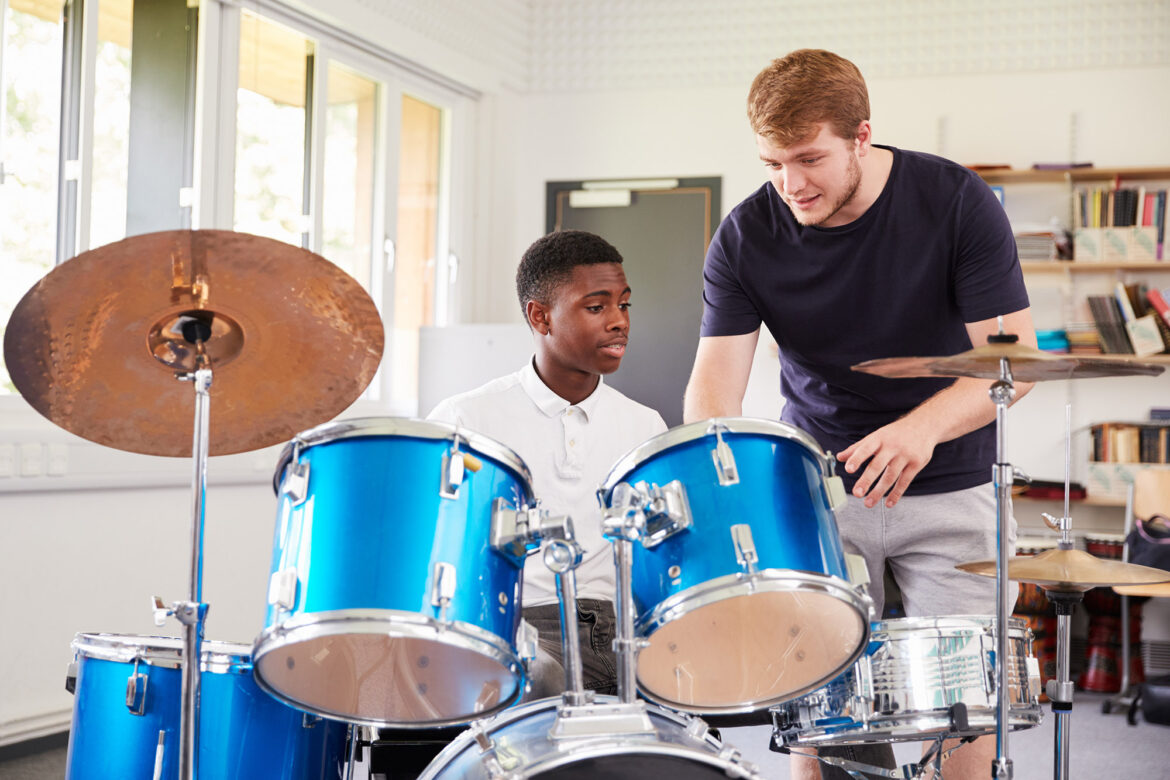Learning something new as an adult is one of the most empowering things you can do for yourself. It opens doors to creativity, reduces stress, and can even lead to exciting new hobbies or careers. Among the many musical instruments one can explore, drumming stands out as a dynamic, energizing, and deeply rewarding pursuit—no matter your age.
If you’ve ever tapped along to a song on your steering wheel or felt the pulse of a live band in your chest, the call of the drums may already be within you. Drumming lessons for adults are not just about keeping time—they’re about unlocking expression, building coordination, and reconnecting with joy.
Why Adults Should Learn to Drum
It’s Never Too Late
Many people believe musical training should start young, but drumming is incredibly accessible at any age. Unlike instruments that may require years of early technical foundation, the drums offer an immediate tactile and rhythmic connection. Adult learners often bring greater discipline and focus, making them well-suited to pick up drumming later in life.
Stress Relief and Emotional Wellness
Drumming is a natural stress-buster. Hitting a snare or tom-tom can be oddly therapeutic, channeling tension and releasing endorphins. Rhythmic activities, especially group drumming or practice with a backing track, have been shown to reduce anxiety, improve mood, and enhance emotional resilience.
Cognitive and Physical Benefits
Drumming requires coordination between the hands and feet while maintaining rhythm and timing. This engages both hemispheres of the brain, improving motor skills, memory, and concentration. For adults seeking to stay mentally and physically active, drumming is an ideal workout for both mind and body.
What to Expect in Adult Drumming Lessons
Drumming lessons for adults are typically designed to be flexible, supportive, and paced appropriately for those balancing work, family, or other commitments. Here’s what a typical learning path looks like:
Introduction to Equipment
You’ll begin by learning the components of the drum kit—bass drum, snare, toms, hi-hats, crash, and ride cymbals. Understanding how each piece contributes to rhythm and sound texture is essential.
Basic Techniques
This stage covers stick grip, posture, and striking techniques. Learning to hold the drumsticks properly, developing control, and mastering rebound are foundational skills for fluid drumming.
Simple Rhythms and Patterns
You’ll start with basic 4/4 beats, learning how to combine the bass, snare, and hi-hat in simple patterns. These rhythms are used in many rock, pop, and funk songs, giving you quick access to playing music you recognize.
Reading Drum Notation
While not mandatory, learning basic drum notation opens up the world of sheet music and drum tabs. It allows you to communicate with other musicians, learn songs faster, and gain a deeper understanding of rhythm structure.
Coordination Development
You’ll practice using all four limbs to play different rhythms simultaneously. These independence exercises are fun puzzles that gradually build your drumming proficiency.
Playing Along with Songs
One of the most rewarding parts of drumming is jamming along to your favorite tracks. Many adult classes integrate this early on, helping students apply techniques in real musical contexts.
Types of Drumming Lessons for Adults
Private One-on-One Lessons
These offer personalized instruction tailored to your pace and goals. Great for adults who prefer individual attention or have specific genres or songs they want to master.
Group Drumming Classes
A lively, social way to learn, group classes often focus on ensemble play, world rhythms, or drumming as a form of wellness. They’re perfect for building community while learning.
Online Lessons
For busy adults or those who prefer learning from home, online courses provide structured programs, video tutorials, and interactive tools. Some platforms also include real-time feedback through video conferencing.
Overcoming Common Challenges
“I Don’t Have Time”
Many adult students fear they won’t be able to commit. The truth is, even 15–20 minutes of daily practice can lead to meaningful progress. Lessons are typically weekly, and flexibility is often built into the schedule.
“I’ve Never Played an Instrument Before”
No musical background is necessary. Drumming is intuitive and deeply connected to natural human rhythm—your heartbeat is proof that rhythm lives in all of us.
“Is It Too Loud?”
Acoustic drums can be noisy, but electronic drum kits are a quiet alternative perfect for home practice. With headphones, you can drum away without disturbing anyone.
Equipment Needed to Get Started
Drum Kit
You can start with a full acoustic drum kit or an electronic kit depending on your space and noise considerations. Some even begin with a practice pad and sticks to learn the basics.
Drumsticks
A pair of good-quality sticks matched to your hand size and style is essential. For beginners, a size 5A or 7A is often recommended.
Metronome
A metronome helps build timing and rhythm control. Many apps offer free digital versions with adjustable tempos and time signatures.
Long-Term Joys of Drumming as an Adult
Once you’ve developed some skill and confidence, drumming opens up a whole world of experiences. You may:
- Join a local band or community group.
- Play casually with friends.
- Record drum covers for social media or personal satisfaction.
- Use drumming as a form of mindfulness and creative expression.
Drumming becomes not just a hobby, but a lifestyle of rhythm, confidence, and fun.
Conclusion: Find Your Beat
Drumming lessons for adults prove that music knows no age. Whether you’re looking to try something new, reconnect with an old passion, or simply add more creativity to your life, the drums are a fantastic starting point.
In a world that often moves too fast, drumming brings you back to the moment—beat by beat. So grab those sticks, find your rhythm, and let the music move you forward.
